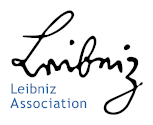- The Institute
- Research
- Dictatorships in the 20th Century
- Democracies and their Historical Self-Perceptions
- Transformations in Most Recent History
- International and Transnational Relations
- Edited Source Collections
- Dissertation Projects
- Completed Projects
- Dokumentation Obersalzberg
- Center for Holocaust Studies
- Berlin Center for Cold War Studies
- Publications
- Vierteljahrshefte
- The Archives
- Library
- Center for Holocaust Studies
- News
- Dates
- Press
- Recent Publications
- News from the Institute
- Topics
- Munich 1972
- Confronting Decline
- Feminist, Pacifist, Provocateur
- Der Mauerbau als Audiowalk
- Digital Contemporary History
- Transportation in Germany
- Envisaged Futures at the End of the Cold War
- From the Reichsbank to the Bundesbank
- German Federal Chancellery
- History of Sustainabilities: Discourses and Practices since the 1970s
- Changing Work
- Democratic Culture and the Nazi Past
- The History of the Treuhandanstalt
- Foreign Policy Documentation (AAPD)
- Dokumentation Obersalzberg
- Hitler, Mein Kampf. A Critical Edition
- "Man hört, man spricht"
- Dictatorships in the 20th Century
- Democracies and their Historical Self-Perceptions
- Transformations in Most Recent History
- International and Transnational Relations
- Edited Source Collections
- Dissertation Projects
- Completed Projects
- Dokumentation Obersalzberg
- Center for Holocaust Studies
- Berlin Center for Cold War Studies
The Norwegian treason trials (Rettsoppgjør) after Second World War from the Perspective of Gender History
Employees (IfZ):
Christina Holzmann
Projektinhalt:
When the war and occupation ended in Norway on 8 May 1945, the wish for a reckoning with collaborators was just as great as that for the rapid reestablishment of the democratic rule of law. Both were to be implemented through the process of Rettsoppgjør (“legal settlement”). This had already been prepared during the war by the Norwegian government in exile and the leadership of the Norwegian resistance. Norway thus provides an important case example for transitional justice following the end of National Socialist rule. This is particularly the case as the Norwegian project of historical reckoning was and continues to be the most comprehensive in the world when taking into account the relation between those under investigation and the size of the country’s population of around 3 million: In the years following the war, over 92,000 people were investigated for possible collaboration. Over 50,000 alleged collaborators were ultimately brought to court, of whom 46,000 were convicted. Around a third of those convicted were women, a high proportion by international comparison.
This dissertation looks into these trials, also known as Landssvikoppgjør (literally “settlement with treason”), pursuing approaches of gender history and taking into account selected collaborator trials. The project is thus located at the intersection of transitional justice research and gender history. The leading question here is the extent to which and manner in which gender played a role within the framework of the trials. It will be examined to what extent gender and gender norms were of significance to investigation, prosecution, defense, and verdicts, to what degree the trials expressed these norms publicly (as via the press), how the gender order during the occupation and post-war eras was reflected in the trials, and what relationship these aspects of gender had with the role of trials in the rebuilding of a democratic Norwegian state.





